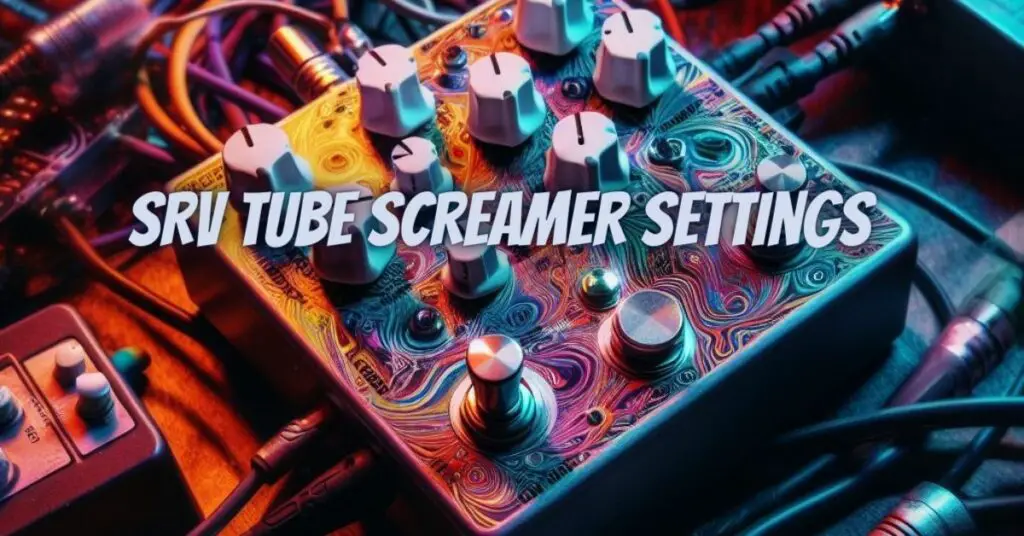Stevie Ray Vaughan, a true legend of the blues and a guitar virtuoso, is celebrated for his unmistakable guitar tone. Central to his tone was the Ibanez Tube Screamer, a pedal that helped define his iconic sound. In this in-depth article, we will explore Stevie Ray Vaughan’s Tube Screamer settings, unravel the secrets of his legendary tone, and provide insights on how you can achieve a similar sound, all while acknowledging that SRV’s tone was a result of a unique combination of gear, technique, and personal style.
Understanding Stevie Ray Vaughan’s Tone
Before diving into SRV’s Tube Screamer settings, it’s essential to understand the fundamental characteristics of his guitar tone:
- Fender Stratocaster: Stevie Ray Vaughan primarily used a Fender Stratocaster, often equipped with Texas Special pickups. This guitar provided the foundation of his tone, characterized by its single-coil pickups and natural resonance.
- Fender Amplifiers: SRV’s choice of amplifiers was typically Fender amps, such as the Fender Vibroverb, Super Reverb, and Vibrolux. These amps are known for their clean and robust tone, which became the canvas on which he painted his signature overdrive.
- Tube Screamer: The Ibanez Tube Screamer was an integral part of SRV’s setup. It was used to push the front end of his amplifier into overdrive, adding warmth, sustain, and a smooth clipping characteristic to his sound.
- Heavy Strings: SRV used heavy-gauge guitar strings (typically .013 to .058), which contributed to his rich, fat tone and facilitated his aggressive bending and vibrato.
SRV’s Tube Screamer Settings
Stevie Ray Vaughan’s Tube Screamer settings were essential in crafting his unmistakable tone. While his exact settings might vary from one performance to another, some common settings and guidelines can be followed to achieve a similar sound:
- Drive (Overdrive): Stevie Ray Vaughan typically set the drive control on his Tube Screamer relatively high, often near or slightly past the 12 o’clock position. This allowed him to achieve a warm, medium-to-high gain overdrive.
- Tone Control: SRV often dialed the tone control back, typically around 10 o’clock to 1 o’clock. This reduced the high frequencies and made his tone smoother and creamier. Experiment with the tone control to find the sweet spot for your gear and style.
- Level Control: The level control on the Tube Screamer was set to match his amplifier’s clean volume level. This ensured that the pedal functioned as a clean volume boost for his solos without adding additional gain.
- Amp Settings: Stevie Ray Vaughan used his Tube Screamer to push his Fender amps into overdrive. To replicate his tone, set your amplifier for a clean, clear tone and rely on the Tube Screamer for overdrive.
Achieving SRV’s Tone
While understanding SRV’s Tube Screamer settings is a crucial step toward achieving his signature tone, it’s essential to acknowledge that tone is a complex interplay of various elements, including your gear, playing technique, and personal style. Here are some additional tips for capturing SRV’s tone:
- Guitar and Amp: To truly capture SRV’s tone, start with a Fender Stratocaster and a Fender amplifier if possible. While not a strict requirement, these components play a significant role in achieving his sound.
- Heavy Strings: Using heavy-gauge strings can help replicate the fat, resonant sound that SRV was known for. Experiment with string gauges to find what works best for your playing.
- Technique: SRV’s technique, including his aggressive picking, powerful bends, and expressive vibrato, was integral to his tone. Focus on your playing dynamics to emulate his expressive style.
- Personal Touch: Remember that SRV’s tone was a result of his unique style and personal expression. While you can use his settings as a starting point, don’t be afraid to tweak and experiment to find your own signature sound.
Stevie Ray Vaughan’s Tube Screamer settings are a valuable reference for guitarists looking to capture his iconic tone. By setting the drive, tone, and level controls on the Tube Screamer and adjusting your amp and guitar to match, you can get closer to his classic sound. However, it’s essential to remember that tone is a complex interplay of various factors, and while emulating SRV’s settings is a great starting point, the ultimate goal should be to find your unique voice and style as a guitarist. Experimentation and personal expression will ultimately guide you toward your own distinctive sound.


